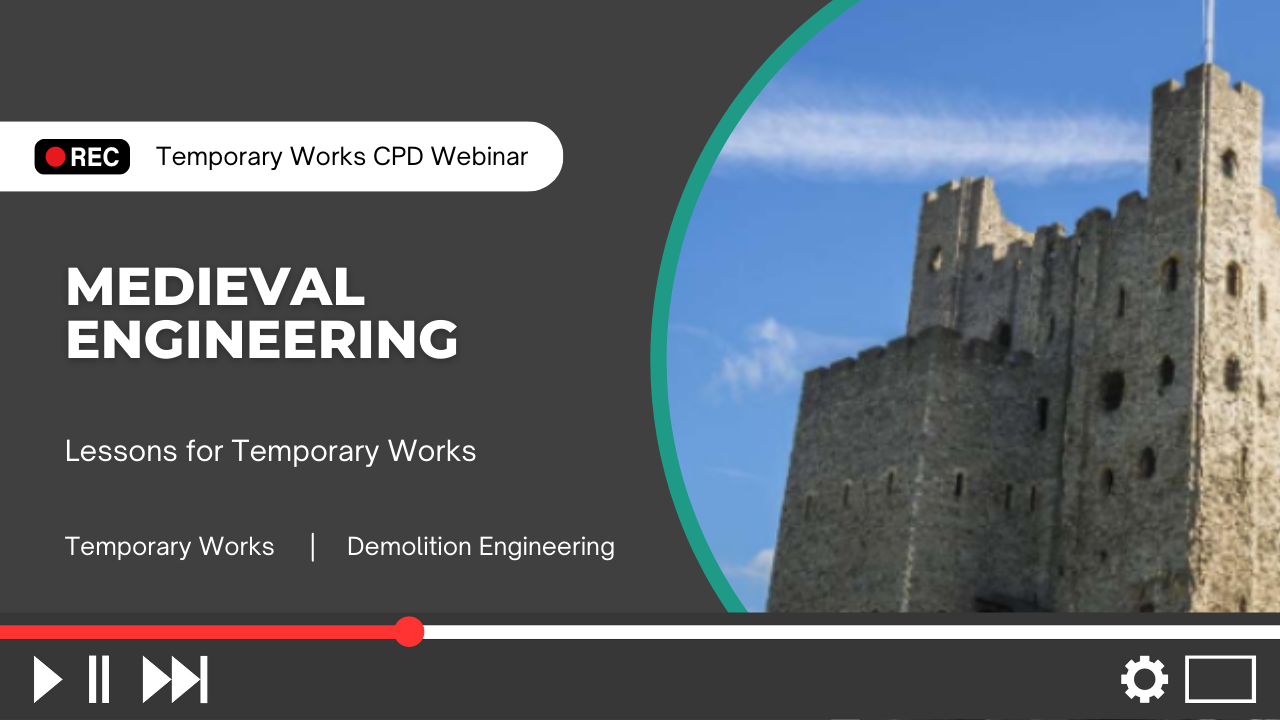
Medieval Engineering – Lessons For Temporary Works and Demolition
The webinar on medieval engineering was delivered by Joshua Martin, Director at Andun Engineering Consultants, centres on dismantling an ancient trebuchet and constructing a new one at Warwick Castle.
Outlining the engineering principles and meticulous procedures implemented in this process while drawing a parallel between these methods and the historical engineering practices.
Key Themes:
- Engineering Principles and Procedures: Substantial emphasis to the detailed dismantling and assembly process of a trebuchet, demonstrating the vital role of engineering principles at every stage.
- Historical Engineering Practices: Contrasting present-day engineering methods with those from the medieval period, focusing particularly on trebuchets as notable relics from the era.
- Sustainability and Resource Utilisation: Joshua reflects on the environmental implications of engineering projects, praising the simplicity and eco-friendliness of past practices despite their limitations.
- Influence of Technology: The webinar underscores the importance of technology in contemporary engineering, including the deployment of temporary works, implementation of health and safety measures, and the scope for innovation in the current engineering landscape.
Medieval Engineering Learning Points:
- Comprehending the historical context of engineering can enhance contemporary practices and foster innovation.
- Temporary works are an essential component in large-scale projects, ensuring stability and operational efficiency.
- Sustainability should be a fundamental consideration in every engineering project, as reflected in Joshua’s admiration for the efficient resource utilisation in the past.
- The role of effective communication and technology utilisation is paramount in today’s engineering sector.
Additional Resources: Joshua directs the audience to various resources for a more comprehensive understanding of the topic. These include YouTube channels, books, and a plethora of literature on historical engineering and structural design. He endorses the exploration of the “Safe by Design” initiative, the BS5975 code for temporary works design, and the abundance of content available on their YouTube channel.
He also recommends books like “Castle” by Mark Morris, “Structures: Or Why Things Don’t Fall Down” by G Gordon, and “The Secret Lives of Buildings”.

